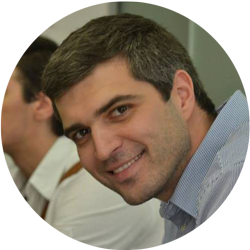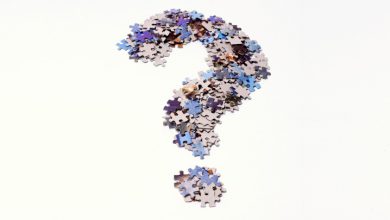The power of a paradigm
Creating a safe and non-judgmental environment is crucial for learners to understand each other deeply and the perspectives they are coming from. It firstly starts by understanding the importance of the paradigm or one’s frame or reference of viewing the world, and it continues into understanding your own view of the world. By understanding the power of the paradigm and reflecting on your own, you will be able to create a safe environment and welcome learners to express their values and believes in a non-judgmental and responsible manner. The content is based on Stephen Covey’s writings in the books “7 habits of highly effective people”. This tool is helpful for reflection and discussion on the topics of #perception #paradigm #openness #trust #communication #society

- What is a paradigm?
The word “paradigm” comes from the Greek word paradeigma, commonly used to mean a perception, assumption, theory, frame of reference or lens through which one is viewing the world. In the more general sense, it’s the way we “see” the world – not in terms of our visual sight, but in terms of perceiving, understanding, and interpreting.
In a more practical term, a paradigm is like a map. A map of a city, for example. Imagine you are holding a wrong map in your hands and you want to reach a certain destination. No matter how hard you try you will never reach that destination – you will feel lost—simply because you are holding the wrong map. Each of us has many, many maps in our head. We interpret everything we experience through these mental maps. We rarely or almost never question their accuracy and we are usually unaware that we have them. We simply assume that the way we see things is the way they really are or the way they should be.
- Why it is so powerful?
For understanding the power of the paradigm, you must see the images below in the “images” section. This exercise was used at Harvard Business School for a demonstration that two groups of people can see the same thing, disagree, and yet both be right. It’s not logical, but it’s psychological.
The exercise:
The exercise was held in a classroom and picture 1 was given to one half of the students and picture 2 to the other half. The professor asked them to look at the pictures and to be concentrated for 10 seconds. He then showed on the screen the picture number 3 and asked the students what do they see? Almost everyone that has seen the young woman’s image(picture 1), saw and described a young woman on the screen. And almost everyone that has seen the old woman’s image(picture 2), saw and described an old woman on the screen. The Students have argued for a long time whether there is an old or a young woman on the screen, depending on the previous conditioning of 10 seconds.
This exercise shows how powerful conditioning affects our perceptions, our paradigms. If 10 seconds can have that kind of impact on the way we see things, what about a lifetime? Imagine the influences in our family, school, friends, etc – they all have made an unconscious impact on us and helped shape our frame of reference, our paradigms, our maps.
It also shows that these paradigms are the source of our attitudes and behavior. We cannot act with integrity outside of them. If we simply see the young woman, it’s difficult to convince yourself otherwise, and agree that it is the old woman. The paradigm also determines the way you interact with other people. Each of us thinks that we see things as they are, that we are objective. But this is not the case. We see the world, not as it is, but as we are – or as we are conditioned to see it. The moment we start describing what we see, we actually describe ourselves, our perceptions, our paradigms. And if other people disagree with us, we immediately think something is wrong with them. But, as the exercise shows, sincere, clearheaded people see things differently, each looking through their unique lens of experience.
The more aware we are of our basic paradigms, maps, or assumptions, and the extent to which we have been influenced by our experience, the more we can take responsibility for those paradigms, examine them, test them against reality, listen to others and be open to their perceptions, thereby getting a larger picture and a far more objective view.
- Understand your own paradigm
Before welcoming learners to share their values and beliefs and understand their paradigm, you must understand and learn about your own paradigm. Learning and understanding your own paradigm is an on-going exercise of questioning and reflecting on different levels. As we have learned in the previous part, conditioning sets your paradigm significantly. So, let’s start of understanding the conditioning in our childhood. Reflection questions that can help you:
- Who is the dominant parent in my family?
The dominant parent has installed, consciously or unconsciously, certain patterns of behavior or beliefs that have influenced us as children. The rules, describing what is right and what is wrong, allowed and forbidden behaviors, perceptions towards certain groups of people (gay, Asian, black, Muslim, etc.) can significantly be influenced by our dominant parent. Think about it. What beliefs you have that are authentically yours and which ones might be copy-pasted from your family?
- Who of the family member you have fond memories of?
This is not necessarily who you loved the most, as with everyone you build a unique relationship and emotions, but this question is more about with whom did you feel most relaxed, most comfortable, most yourself. This usually might be one of the grandparents but not necessarily, think about it. And reflect on how you felt, what did you like doing, what behavior did you express when you felt most free? What were the environment and the surrounding? In these answers somewhere lays bits and pieces of the authentic you.
- Who is your childhood hero?
This can be a cartoon character or a movie character a musician or an artist. Understanding and reflecting on your childhood hero can give you an insight into the characteristics and character that you aspired to become. Think of your hero in terms of “what are the values this hero demonstrated?”; what are the characteristics (strengths) that he possessed? What inspired you the most that made him/her your hero? The understanding of these answers will give you another insight into your authenticity.
Other questions that can help you reflect on your paradigm are:
- Who was your best friend as a child? Why?
- How school influenced you as a child?
- Which teacher inspired your learning and curiosity? What did you learn from your teacher?
- Who was your first boyfriend/girlfriend? Why? What are the characteristics that made you feel emotionally attached to that person? What are the impacts that that relationship had on you?
All these questions aim to make you think about how your perceptions were built from important people/situations or emotional experiences in your life? It’s important to think about some of your current perceptions and if they are attached to these previous experiences and people. Is this really you or it is the expectation someone you cared about had for u and vice-versa? Think about it.
One of the key messages that Stephen Covey gave in his book is the following:
“If you want to make minor improvements work on practices, behavior, and attitude. If you want to make significant, quantum improvements, work on paradigms.”
- Welcome learners to understand their paradigm and listen wholeheartedly
By understanding the importance of the paradigm and the conditioning from childhood you will certainly increase your awareness of the importance of being non-judgmental about learner’s values and beliefs. You should be able to demonstrate understanding and respect for everyone’s point of view and try to understand the paradigm they are coming from. When working with other learners you must create a safe and non-judgmental environment so everyone can speak wholeheartedly and sincerely from their own perspective and feel safe that they will not be judged. It is your role as a trainer to bring this perspective to the table and encourage everyone to understand their paradigm and talk about it openly. When empowering young people to take an active role in society and being civically engaged, we have to make sure that they speak their own truth based on their beliefs and values and they are not being influenced by their social groups, political groups, parents or teachers. Your role as a trainer is to create an environment where learners express their values and beliefs responsibly and respectfully and they understand that everyone can be right at the same time. It is also important that you welcome listening wholeheartedly and reflect on the paradigm that is authentically attached to the speaker and is derived from the universal principles of non-discrimination, tolerance, justice, solidarity, human rights, and equality.
The civic engagement perspective
Understanding your own paradigm and engaging in a meaningful conversation with the learners (young people) is an important step in guiding their civic engagement. This tool is about setting the learners to find their own voice and authenticity. More importantly, it gives them more clarity about their beliefs which were influenced by other people, their close ones, or the society as a whole.
Engaging in a discussion about the paradigm that the European Union is providing is also a meaningful discussion to have. The paradigm that the EU is providing to the young people is based on the values enshrined in the Treaty of the European Union. Are the values reflected in their everyday lives, schools, and relationships they have with their peers or elderly people? What are the areas/values/paradigm in which they want to see improvement? Encourage them to take action on that.
Why did I choose this tool?
This tool is a powerful way to inspire trainers to understand different perspectives and encourage diversity, non-discrimination, tolerance, and solidarity. It has reflection questions that can influence the reader’s perception and it also gives guidance on working with other learners and groups in steering meaningful conversations.
Reflection Questions
In point 3. Understanding your own paradigm – there are reflection questions that can help you reflect meaningfully
More questions for reflection can be related to the European Union and the paradigm that the EU is providing for young people? How do young people understand the values of the European Union? Which of the values is not being respected in everyday life or school? What do young people want to improve? And take action about it?
Exercises:
These questions will make you think about how your perceptions were built from important people/situations or emotional experiences in your life and how your paradigms were formed.
- Who was your best friend as a child? Why?
- How school influenced you as a child?
- Which teacher inspired your learning and curiosity? What did you learn from your teacher?
- Who was your first boyfriend/girlfriend? Why? What are the characteristics that made you feel emotionally attached to that person? What are the impacts that that relationship had on you?
It’s important to think about some of your current perceptions and if they are attached to these previous experiences and people. Is this really you or it is the expectation someone you cared about had for u and vice-versa? Think about it.
The significant problems we face cannot be solved at the same level of thinking we were when we created them. – Albert Einstein





